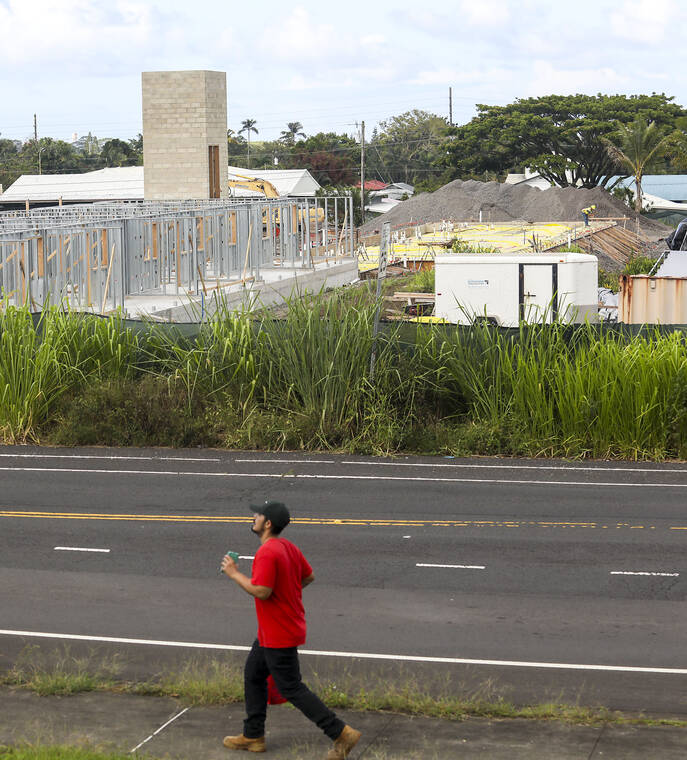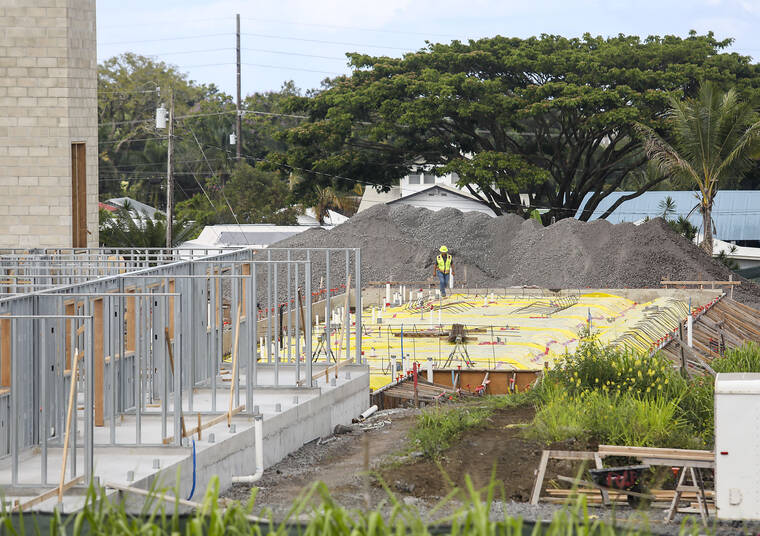While Hawaii residents face the highest housing costs in the nation, the Big Island is described as “an outlier in terms of home prices.”
That’s according to the first edition of an annual report on the state of housing called “The Hawaii Housing Factbook,” released Wednesday by the University of Hawaii Economic Research Organization, or UHERO.
The lead author of the report is Justin Tyndall, an assistant professor of economics at UH-Manoa. His collaborators are Daniela Bond-Smith, a data scientist and research economist, and Rachel Inafuku, a research economist.
The median sales price for a single-family home statewide in the 12 months between June 2022 and May 2023 was $851.000. Honolulu and Maui counties each exceeded the $1 million mark, while the median price for a single-family home on Kauai was $892,000.
In contrast, the median price for a single-family home in Hawaii County was $400,000. At $550,000, median condominium prices on the Big Island actually exceed those of single-family homes.
“Home prices the last few decades have tripled in Hawaii compared to other states,” Tyndall said Thursday during an online press conference. “And over the same period, we’ve seen this real big decline in affordability. The ability for local households to afford to purchase a house has declined recently and is at a very low level. There’s a lot of contributing factors here, but more recently, high interest rates have made it harder to afford a mortgage.
“This has a lot of negative consequences for the economy. Our ability to retain residents is really hurt by the lack of affordability, so we see a lot of people leaving for the mainland or other destinations, high rates of homelessness, a lot of other serious issues that stem from a lack of affordability.”
Mortgage buyer Freddie Mac said Thursday the average rate on the benchmark 30-year home loan rose to 6.71% from 6.67% last week. A year ago, the rate averaged 5.7%
“Since interest rates have spiked, affordability has really cratered,” Tyndall said.
The two communities with the highest single-family home prices were on Kauai — Kilauea, at almost $2.3 million, and Anahola, at $2.15 million. No. 3 is Laie, on Oahu’s North Shore, at almost $1.9 million.
The three lowest median single-family home prices were all found on Hawaii Island: Hawaiian Beaches in Puna, at $230,000; Discovery Harbourin Ka‘u, at $272,500; and Hawaiian Ocean View Estates in Ka‘u, at $307,500.
“There’s some neighborhoods on Kauai where the prices are 10 times what they are in some neighborhoods on the Big Island,” Tyndall said.
According to the report, the median annual household income in Hawaii County is $68,399, ranking it last among the state’s four counties.
Ocean View’s median household income is $25,402 — which ranks it dead last among the 63 communities statewide analyzed in the study, Discovery Harbour’s median income is $54,474, and Hawaiian Beaches’ is $40,240.
Ocean View also has a 15.9% unemployment rate, the highest in the state.
In the past five years, there was a net increase of 26,648 housing units statewide, according to the study.
There were 11,729 construction permits approved for single-family homes over the past five years and 411 multifamily developments statewide, with a median permit processing time of 161 days.
Over the past five years in Hawaii County, there was a net increase of 2,931 housing units, second to the City and County of Honolulu.
During that five-year period, Hawaii County officials approved 4,672 construction permits for single-family homes, the most in the state, but just five permits for multifamily developments, the lowest statewide.
The median construction permit processing time in Hawaii County was 458 days — more than twice as long as any other county.
“Hawaii’s really an outlier on how long it takes to get housing permitted and how onerous regulations are around housing,” Tyndall said. “So, this contributes to a very low level of housing supply, as we really haven’t built a lot of housing over the last few decades — and this has shown up in very high prices.”
Another factor putting a strain on the residential housing supply is the short-term vacation rental market.
Statewide, there were 30,476 active short-term vacation rentals, or 5.5% of housing stock.
In Hawaii County, there were 6,747 active STVRs, or 7.8% of stock — third among the four counties percentage-wise, behind Kauai’s 16% and Maui’s 14%.
“This puts more strain on the housing system,” Tyndall said.
“But the big takeaway from our analysis was the need to build more housing.”
The full report can be viewed here: https://uhero.hawaii.edu/the-hawaii-housing-factbook/.
Email John Burnett at jburnett@hawaiitribune-herald.com.









